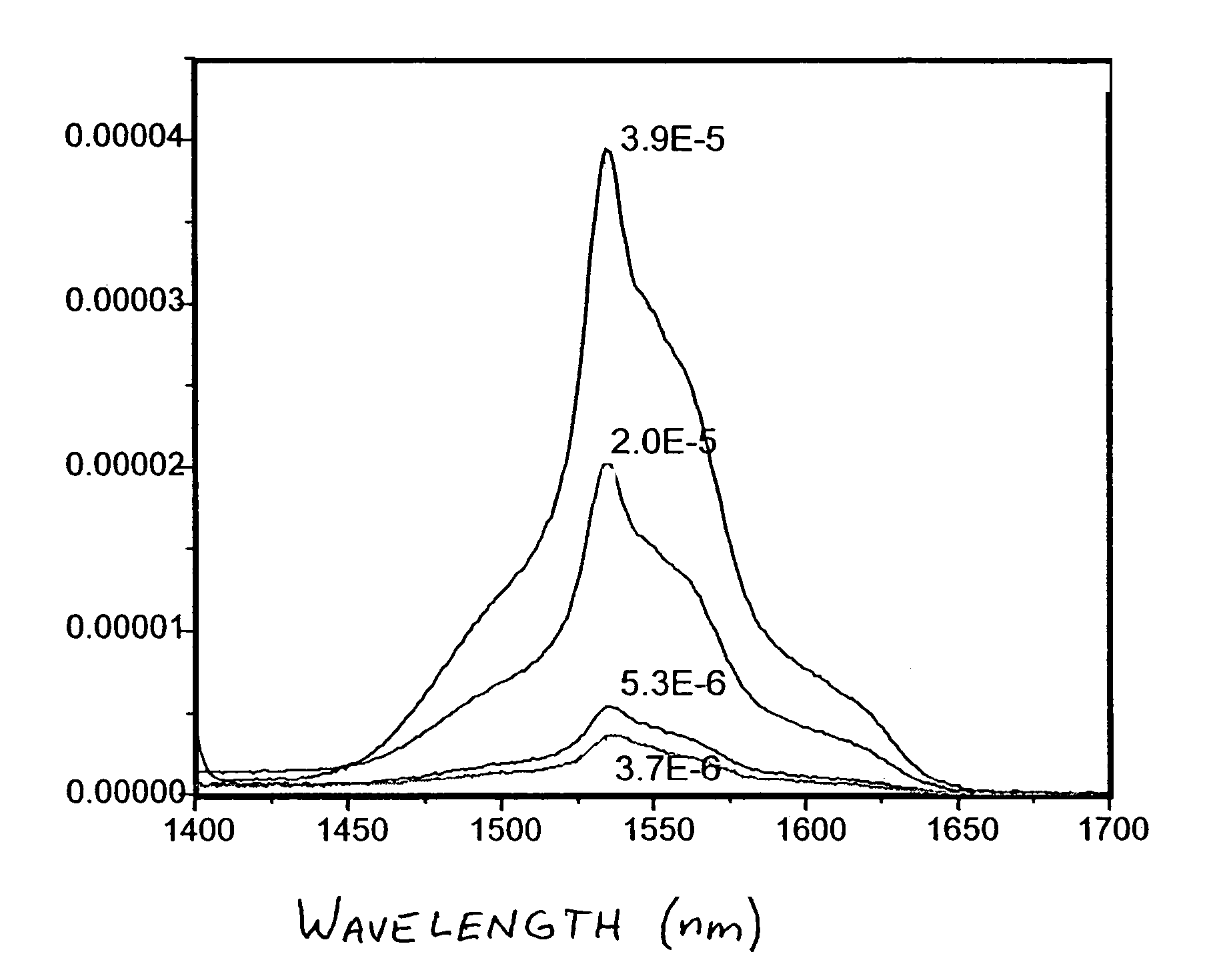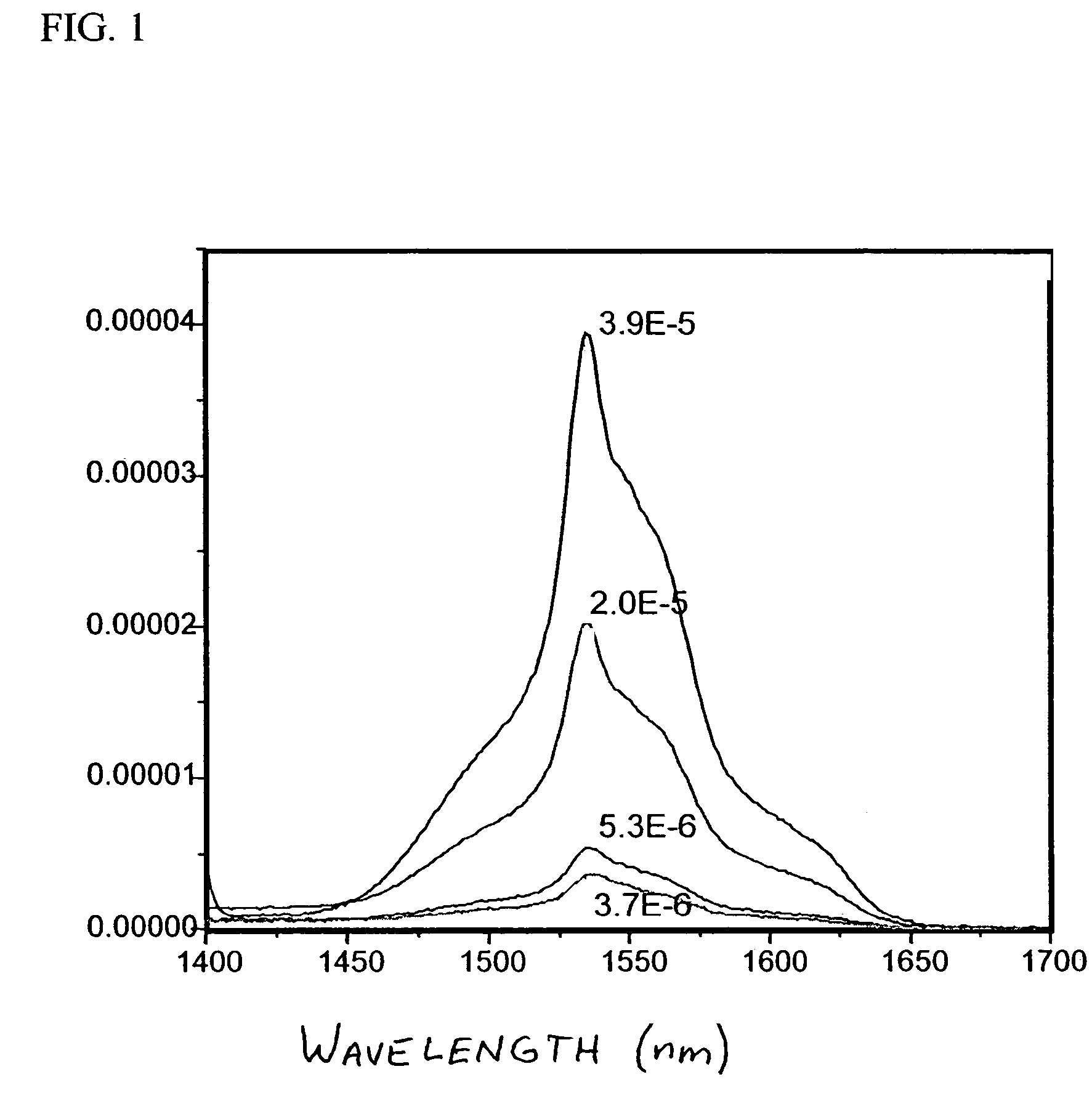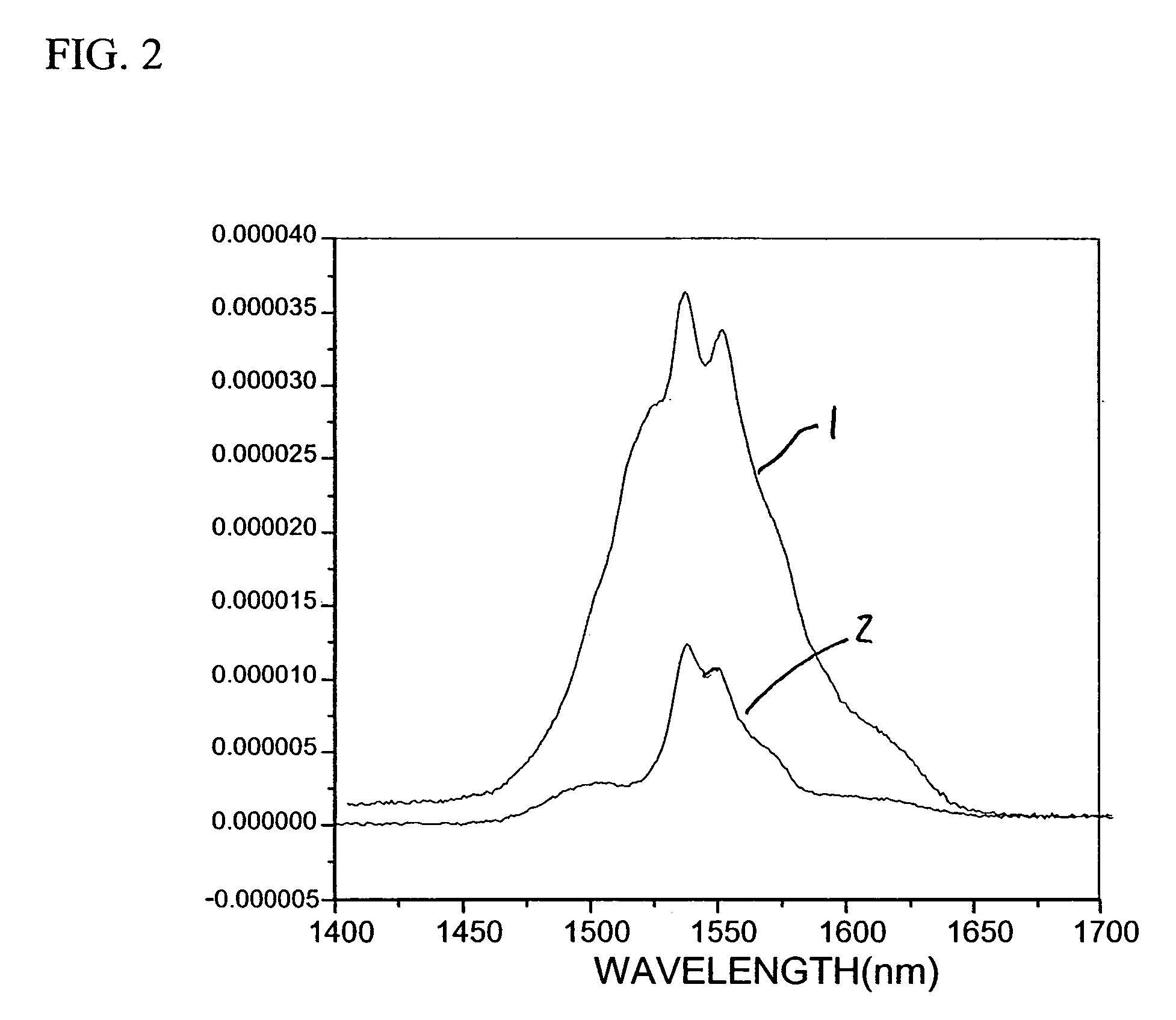Optically transparent nanocomposite materials
a nano-composite material, optically transparent technology, applied in the direction of solid-state devices, discharge tube/lamp details, inorganic chemistry, etc., can solve the problem of optical attenuation of composite materials, and achieve the effect of reducing the number of optical attenuation peaks, facilitating formation, and facilitating fiberizability
- Summary
- Abstract
- Description
- Claims
- Application Information
AI Technical Summary
Benefits of technology
Problems solved by technology
Method used
Image
Examples
example 1
Preparation of SAE / 6F Nanocomposites
[0051]10 wt % of 6F polymer solutions were used to prepare all the ceramic / polymer nano-composites. The SAE solid loadings in 6F polymer were 3, 5, 10, and 20 wt %. For example, 0.192 g of 6F polymer was dissolved in 1 ml toluene. 10 wt % (0.021 g) SAE was mixed with 1 ml toluene and ultrasonicated for 15 minutes (Ultrasonicator, Model FS30, Fisher Scientific, Fair Lawn, N.J.). The SAE / toluene suspension was mixed with 6F polymer solution by ultrasonicating for an additional 15 minutes. The SAE / 6F composite with 10 wt % SAE loading was cast on a glass slide and oven dried at 50° C. (Isotemp® Oven, model 230Gm Fisher Scientific, Pittsburgh, Pa.). The was repeated for each level of SAE loading. IR emission spectra are shown in FIG. 1, with 3.9 E-5 corresponding to 20 wt % SAE, 2.0 E-5 corresponding to 10 wt % SAE, 5.3 E-6 corresponding to 5 wt % SAE and 3.7 E-6 corresponding to 3 wt % SAE.
example 2
Preparation of Ho-doped LaF3 / 6F Nanocomposites
[0052]Ho—LaF3 / 6F composites were prepared as in Example 1. For example, 0.192 g 6F polymer was dissolved in 1 ml toluene. 10 wt % (0.021 g) Ho—LaF3 was mixed with 1 ml toluene and ultra-sonicated for 15 minutes. The Ho—LaF3 / toluene suspension was mixed with the 6F polymer solution by ultrasonicating for an additional 15 min. The Ho—LaF3 / 6F composite was cast on a glass slide and oven dried at 50° C.
example 3
Preparation of Er—Yb-doped CaF2 Nanocomposites
[0053]Er—Yb-CaF2 (Er, 8 mol %; Yb, 4 mol %) was prepared by the solvothermal method in a solvent mixture of ethylene glycol / water (6.5 / 1, v / v). At room temperature, a solution of Er(OAc)3 (0.64 mmol), Ca(NO3)2 (8 mmol) and Yb(NO3)3 (0.32 mmol) in 22 ml water was added dropwise into an NH4F (18 mmol) ethylene glycol / water solution while stirring. The reaction mixture was stirred at refluxing temperature for 2 hours and cooled to room temperature. The precipitate was separated by centrifugation (15 minutes at 18,000 rpm) and washed with ethanol / water (v / v, 1:1) two times and DI water two times. The product was lyophilized for 48 hours.
[0054]XRD analyses were carried out by a Kristalloflex D-500 powder diffractometer using Ni filtered Cu Kα radiation. The samples were scanned in the 2θ range of 10–70°, at a step size of 0.05 (° / step). Crystallographic identification of the as-prepared CaF2 powders was accomplished by comparing the experimen...
PUM
| Property | Measurement | Unit |
|---|---|---|
| particle size | aaaaa | aaaaa |
| diameter | aaaaa | aaaaa |
| particle sizes | aaaaa | aaaaa |
Abstract
Description
Claims
Application Information
 Login to View More
Login to View More - R&D
- Intellectual Property
- Life Sciences
- Materials
- Tech Scout
- Unparalleled Data Quality
- Higher Quality Content
- 60% Fewer Hallucinations
Browse by: Latest US Patents, China's latest patents, Technical Efficacy Thesaurus, Application Domain, Technology Topic, Popular Technical Reports.
© 2025 PatSnap. All rights reserved.Legal|Privacy policy|Modern Slavery Act Transparency Statement|Sitemap|About US| Contact US: help@patsnap.com



